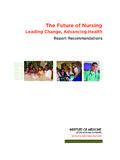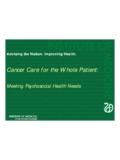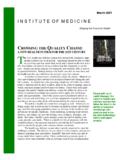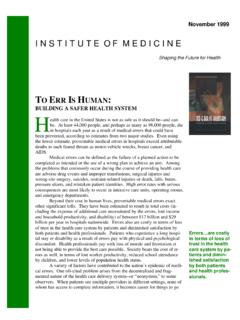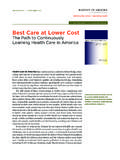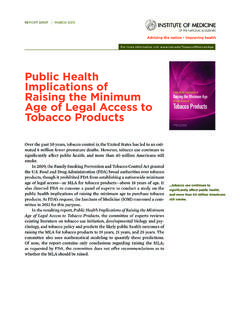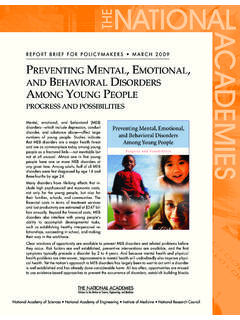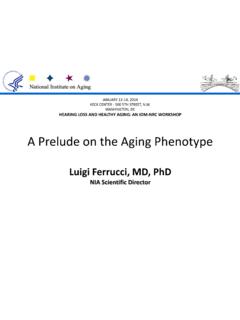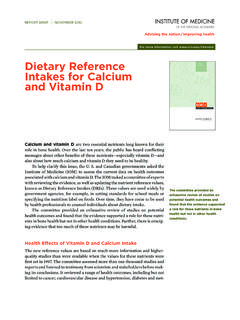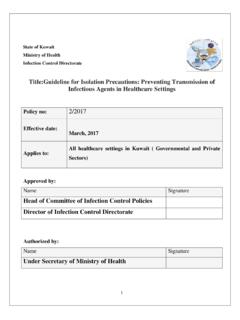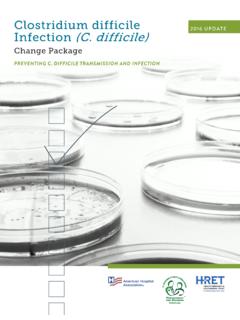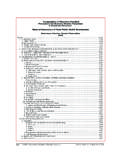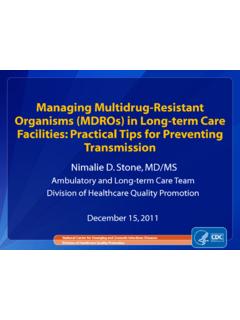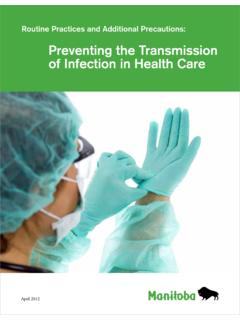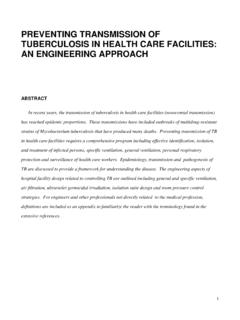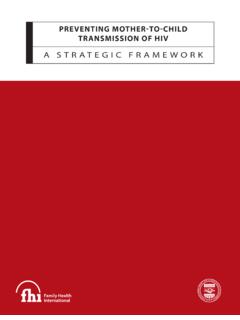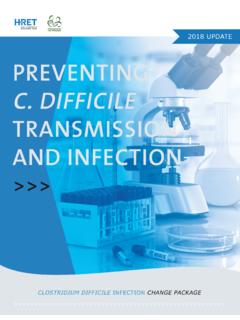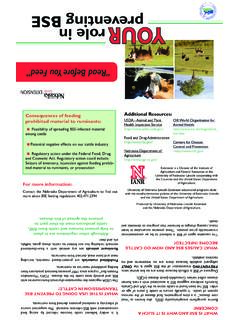Transcription of Preventing Transmission of Pandemic Influenza and Other ...
1 For more information visit BRIEF JANUARY 2011 Preventing Transmission of Pandemic Influenza and Other Viral Respiratory DiseasesPersonal Protective Equipment for Healthcare Personnel Update 2010In 2009, the H1N1 Influenza Pandemic brought to the forefront the many unknowns about the virulence, spread, and nature of the virus as well as questions regarding personal protective equipment (PPE) for healthcare personnel. Because researchers still have a lot to learn about how Influenza is transmitted from person to person, one major question that arose during the H1N1 Influenza Pandemic was determining what types of PPE (particularly face masks or respirators) are needed to protect healthcare personnel from disease Transmission .
2 In light of the unanswered research questions following the 2009 H1N1 Influenza Pandemic , the National Personal Protective Technology Labora-tory (NPPTL) at the National Institute for Occupational Safety and Health (NIOSH) asked the Institute of Medicine (IOM) to conduct a study updating the progress on research and identifying future directions for PPE for health-care personnel since releasing the 2008 IOM report Preparing for an Influenza Pandemic : Personal Protective Equipment for Healthcare Workers. New hori-zons in PPE research and attention to PPE innovations offer the promise of improvements in healthcare worker safety.
3 The focus of research efforts often shifts to Other health concerns between pandemics so continuing the research momentum is critical to ensure that the nation is prepared for the next influ-enza Healthcare Personnel with PPEPPE encompasses the specialized clothing or equipment used by personnel for protection against health and safety hazards. For healthcare personnel, The focus of research efforts often shifts to Other health concerns between pandemics so continu-ing the research momentum is critical to ensure that the nation is prepared for the next Influenza Pandemic . 2 Innovating and Strengthening PPE Design and TestingWhile research has led to improvement in the filtration capabilities of respirators, efforts con-tinue to work toward improving the fit of these protective devices.
4 Current challenges with fil-tering facepiece respirators include improper fit and leakage as a result of not sealing properly to the face. New technologies need to be designed to improve the fit and reduce inward leakage of these respirators. Although the physiologi-cal impact of respirators (for example, comfort, breathability, and retention of heat) has been studied in depth, such information is lacking regarding Other types of PPE. Researchers also have studied decontamination methods that do not affect the physical characteristics of respira-tors, but most have yielded inconclusive results and should continue to be studied.
5 Another area that should be explored is the role that face masks and face shields play as PPE for viral respiratory diseases. Committing to Worker Safety and Appropriate Use of PPEW hile the committee acknowledges that there are gaps and deficiencies in the research about PPE use in health care, the committee concludes that there is sufficient knowledge to recommend a four-pronged strategy for immediate implementa-tion of guidelines and planning for effective PPE use. The four elements include deliberate planning and preparation at the 1. leadership and organizational levels; comprehensive training for all personnel, 2.
6 Including supervisors and managers; widespread and convenient availability of 3. appropriate PPE devices; and accountability at all levels of the organiza-4. tion. Policies for PPE use by healthcare personnel need to be carefully planned at the organizational/PPE may include respirators, face masks, gloves, gowns, eye protection, and face shields. In an Influenza Pandemic , Preventing the spread of the virus requires that personnel know how to prop-erly wear and use the appropriate PPE, yet in the past this knowledge has been limited. In particu-lar, understanding the differences between and correct uses of respirators and face masks can be challenging for healthcare personnel.
7 Respira-tors are specifically designed to provide respira-tory protection by purifying the air inhaled by the wearer through filtering materials or by indepen-dently supplying breathable air. Research shows that the major concerns with the respirators are the filtration and the fit that is, the effectiveness of the filter and the extent to which the respirator has a tight seal against the wearer s face to restrict leakage. In contrast, face masks, including surgi-cal masks, are loose-fitting coverings of the nose and mouth; face masks are not designed or certi-fied to protect the wearer from exposure to respi-ratory the Transmission of Influenza and Other Viral Respiratory DiseasesMuch of the discussion regarding how Influenza is transmitted has focused on the modes of transmis-sion droplet spray, aerosol, and direct or indirect contact.
8 While researchers have made some prog-ress in understanding these different modes of Influenza virus Transmission , the extent to which each mode contributes to the overall spread of ill-ness is still unclear. In addition, few studies have focused on effective PPE interventions to reduce the Transmission of Influenza in hospitals or Other healthcare facilities. These studies are needed to guide policy makers seeking to ensure the health and safety of healthcare personnel. Observational and controlled studies relevant to PPE use and Transmission of Influenza or Other viral respira-tory diseases have been limited because few study protocols were in place during the 2009 H1N1 and recent seasonal flu level to ensure a culture of safety, compliance, and buy-in at all levels.
9 Addition-ally, managers and frontline workers alike need to understand and accept their roles and respon-sibilities, and using PPE needs to be as easy and convenient as possible for healthcare personnel. RecommendationsIn an effort to continue the research momentum, the committee developed a number of recommen-dations:Across the Spectrum of Research Develop standardized terms and defini- tions Develop and implement a comprehensive research strategy to understand viral respi-ratory disease Transmission Policies for PPE use by healthcare personnel need to be carefully planned at the organizational/ institutional level to ensure a culture of safety, compliance, and buy-in at all levels.
10 From Safety to Efficacy Applying Basic Research to Clinical SituationsContinue and expand research on PPE for healthcare personnelExamine the effectiveness of face masks and face shields as PPEI mprove fit-test methods and evaluate user seal checksFrom Efficacy to Effectiveness Moving to Systems ResearchExplore healthcare safety culture and work organizationIdentify and disseminate effective leader- ship and training strategies and Other inter-ventions to improve PPE useAn integrated system moving research into practice, depicting the translation of research from basic science (T1) through policy and regulatory research (T4).

